Complete Story
04/13/2015
The Practicality of the Medical Model
Jason R. Miller, OD, MBA
By: Jason R. Miller, OD, MBA
The medical model…the medical model…the medical model is a term that is frequently used within optometry and the question is why? Why do we as practitioners need to be involved and what impact does it have on our practice? Traditionally, optometry is known as the primary eye care provider who provides not only vision care, but medical eye care as well. We are all highly trained in the diagnosis and management of ocular disease, yet only 17% of practice revenue is derived from medical eye care.1 The question is why is this number so low? The medical model can have a positive impact on our patients and our practice.
For Survival
There are numerous threats to our profession that will have an impact on our practice survival. Online retailers (both glasses and contact lenses) will continue to offer affordable options to our patients. We know that many patients who make purchases online are less frequently coming into our practices for their routine care. Insurance plans, both vision and medical, will continue to find ways to attract their customer base while providing less reimbursement for our services. Get involved and support your local, state and national associations either physically or financially. These are the groups that help fight and secure your ability to practice medical optometry.
You are the Expert!
We are the experts and it’s important to establish that perspective of ourselves in such a manner. Although we all have different comfort levels in ocular disease management, there are numerous educational resources available to help us along including continuing education and webinars. In those cases outside of our comfort level, we have colleagues that we can refer to for secondary and tertiary referral. Nonetheless, the majority of ocular disease can be managed within any optometric practice. Our role is to educate our patients on what we do and our role within medical eye care.
Technology Integration
Although advanced technology isn’t necessary for all ocular disease cases, evaluate your current patient base to see what types of patients are already within your practice. For complex diseases such as glaucoma and macular degeneration, state-of-the-art technology will be a must. There are numerous technologies that we all have on our “practice wish list” however we know that the decision needs to make economic sense before any purchase. Determining what percentage of your patients comes to your practice for medical eye care is important. Utilize your EMR system to data mine common diagnoses or patient segments that may benefit from specific services. One example would be determining whether or not to purchase a fundus camera. The first step would be to look at the number of patients within your practice who have diabetes or glaucoma. Next, evaluate the current trends and prevalence of the various disease states to see how you compare. Is your practice prevalence pattern higher or lower than these averages? If it’s lower, there may be numerous patients that may have been potentially overlooked in the past or just wasn’t followed since the technology wasn’t available. Lastly, perform a breakeven analysis (projected gross income minus projected annual expense) to see how long it will take for you to pay off the technology. If it all adds up, then purchase the equipment. If not, there are other ways to provide these services such as co-ownership of technologies where the cost is shared or comanaging with our optometric colleagues for special testing services only.
Write the Rx
One last note on developing yourself as an expert in medical eye care is practice of prescribing versus sampling. Although samples are available for us to offer our patients, we must use them wisely. In our practices, we use samples for our patients who may not be able to afford them or to determine efficacy for chronic conditions such as glaucoma. By having patients purchase their medications, they will have to take ownership in their condition which will also help with patient compliance. Since they have made in investment in their care, they will understand the value in their treatment and more likely follow the prescribe regimen.
In Conclusion
From the initial phone call to schedule an appointment to the examination to the checkout process, everything that we say, do and not do (non-verbal communication) contributes to the overall patient experience. Technology is constantly changing the way that we practice optometry and contributes to the “WOW Experience”. Whatever your passion is in medical eye care from ocular surface disease to glaucoma to retina, there are numerous technologies that have impacted the way that we care for our patients today. Each time we perform testing, we need to maximize the opportunity to discuss the reason for doing each test. Invest in adopting the medical model and the practice will win.
References
- Management and Business Academy. Key Metrics: Assessing Optometric Practice Performance. 2013. Accessed from http://www.mba-ce.com/data/sites/1/paa_keymetrics_0813.pdf on March 23, 2014.




